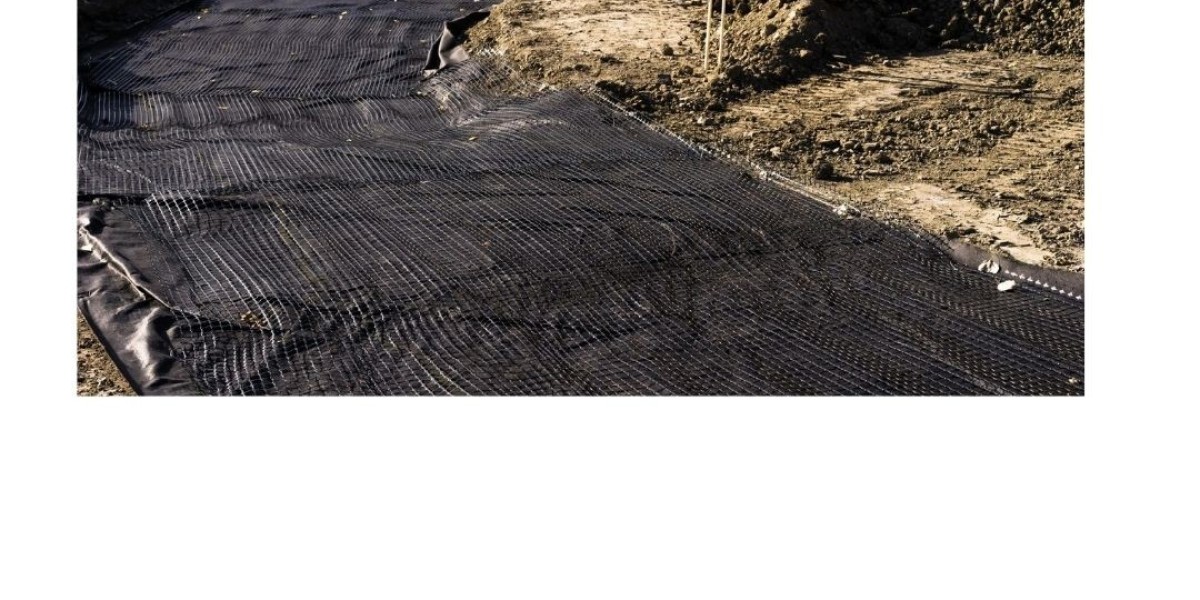Geonets are innovative geosynthetic materials that have significantly transformed road construction and engineering practices. These three-dimensional structures, typically made from high-density polyethylene (HDPE) or polypropylene, provide essential drainage and reinforcement capabilities. Their unique design allows for efficient water management and soil stabilization, making them invaluable in modern road construction projects.
Understanding Geonets in Road Construction
Geonets, characterized by their grid-like structure, consist of interconnected ribs that create a network of voids. This configuration facilitates the rapid movement of water, thus preventing hydrostatic pressure buildup and erosion. The application of geonets in road construction enhances the durability and longevity of roadways by improving the stability of subgrade soils. This is particularly crucial in areas with weak or unstable ground conditions, where traditional construction methods may falter.
Geonet in Road Construction: Geonets are primarily utilized to reinforce subgrade layers, which are critical for the overall integrity of the roadway. By distributing loads more evenly across the soil, they help mitigate issues such as differential settlement and cracking, which can lead to costly repairs and maintenance over time.
Benefits of Geonets for Highway Construction
The use of Geonets for highway construction offers several advantages:
Enhanced Drainage Performance: Geonets improve drainage efficiency by providing a clear pathway for water to flow away from the road surface. This is vital for preventing water accumulation that can weaken road structures and lead to failures.
Cost-Effectiveness: Compared to traditional methods of road reinforcement, geonets are a more economical solution. Their lightweight nature reduces transportation costs and installation time, allowing for quicker project completion.
Environmental Sustainability: By promoting effective drainage and reducing erosion, geonets contribute to environmental protection. They help maintain natural water cycles and prevent soil degradation, making them an eco-friendly choice in construction.
Applications of Geonets in Road Engineering
Geonet in road engineering beyond mere reinforcement:
Asphalt Overlay Systems: When incorporated into asphalt overlays, geonets can prevent reflective cracking, significantly extending the lifespan of the pavement.
Erosion Control: In areas prone to erosion, geonets serve as stabilizers that hold soil in place while allowing water to drain efficiently.
Retaining Walls: Geonets are often used behind retaining walls to manage water pressure effectively, thus enhancing structural stability.
Landfill Liners: In landfill projects, geonets assist in leachate management by facilitating drainage while preventing contamination of surrounding soils.
Installation Techniques for Geonets
Proper installation is crucial for maximizing the benefits of geonets in road construction. The installation process typically involves several key steps:
Site Preparation: The area must be graded and compacted to create a stable base for the geonet installation.
Placement: Geonets are laid out on the prepared surface, ensuring that they are aligned correctly to facilitate optimal drainage.
Backfilling: Once positioned, the geonet is covered with soil or other materials as specified in the project design. This backfill process helps secure the geonet in place while providing additional load support.
Compaction: The backfilled material is compacted to ensure adequate contact between the geonet and surrounding soils, enhancing its effectiveness.
Challenges and Considerations
While geonets offer numerous benefits, there are challenges associated with their use:
Material Quality: The long-term performance of geonets depends on the quality of materials used. Low-quality products may degrade faster under harsh environmental conditions.
Installation Expertise: Skilled professionals must be involved in the installation process to ensure that geonets function as intended. Improper installation can negate their benefits and lead to structural failures.
Maintenance Requirements: Regular inspections are necessary to identify any potential issues with the geonet system over time. Maintenance practices should be established as part of the overall project management plan.
Future Trends in Geonet Technology
The future of geonets in road construction looks promising as ongoing research continues to innovate within this field. Emerging trends include:
Smart Geosynthetics: The development of sensor-integrated geonets could provide real-time monitoring capabilities for assessing structural integrity and performance under various conditions.
Sustainable Materials: Advances in material science may lead to the creation of more environmentally friendly geosynthetic materials that further reduce ecological footprints during construction.
Integration with Other Technologies: Combining geonets with other advanced technologies like drones for site surveying could enhance project efficiency and accuracy.
Conclusion
Geonets represent a significant advancement in road construction technology, offering enhanced drainage capabilities and structural reinforcement. Their applications span various aspects of highway engineering, making them essential tools for modern civil engineers. As technology evolves, so too will the potential uses and benefits of geonets in creating sustainable infrastructure solutions.
Frequently Asked Questions (FAQs)
What are geonets used for in road construction?
Geonets are primarily used for reinforcing subgrade layers, improving drainage performance, preventing erosion, and extending the lifespan of roads by mitigating issues such as cracking and differential settlement.
How do geonets improve highway construction?
Geonets enhance highway construction by providing effective drainage solutions that reduce hydrostatic pressure on road surfaces while also stabilizing weak soils beneath the pavement structure.
Are there any challenges associated with using geonets?
Yes, challenges include ensuring material quality for long-term performance, requiring skilled installation professionals to maximize effectiveness, and maintaining regular inspections to address potential issues over time.







